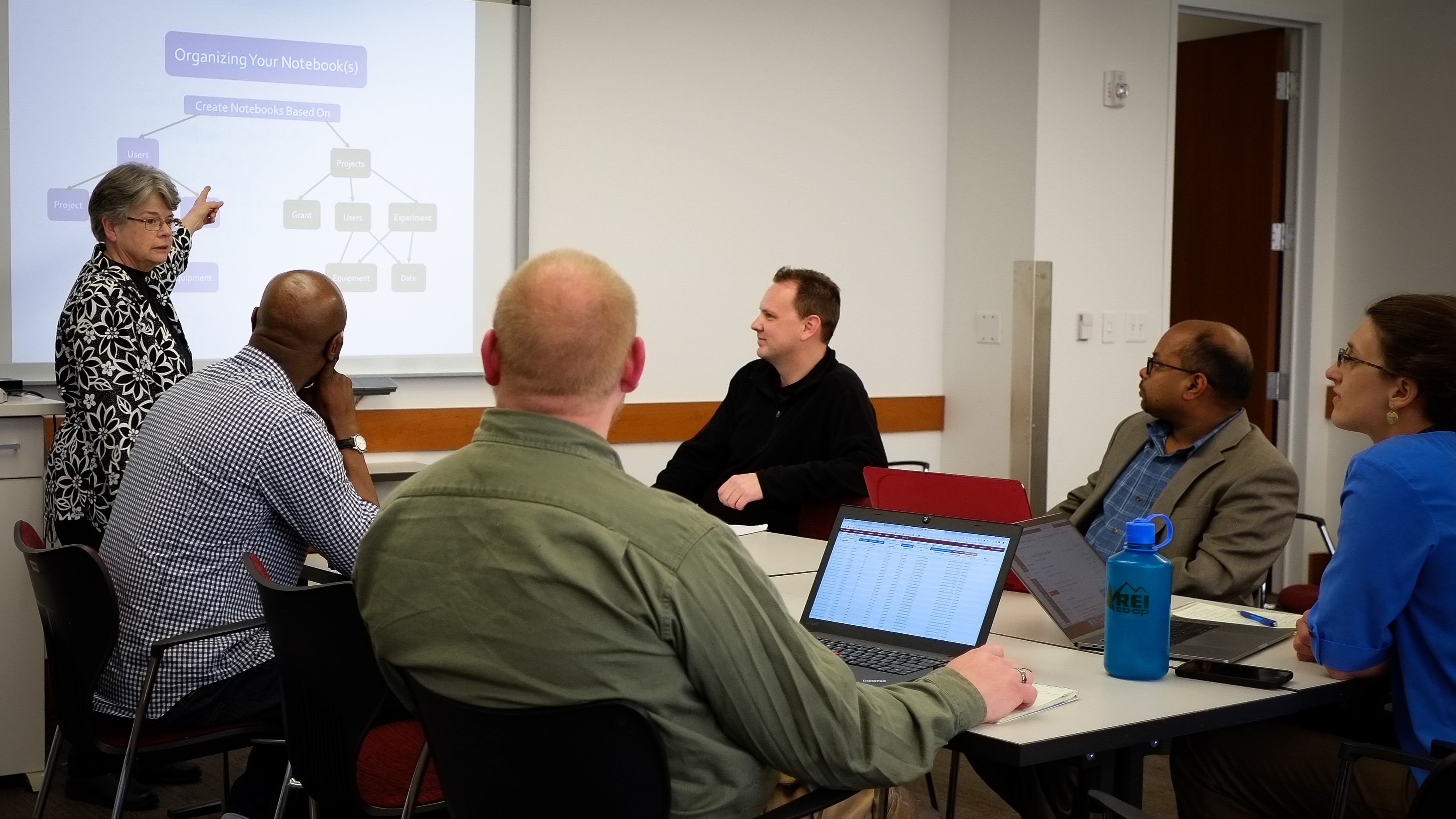2019 JoVE Librarian Travel Award Winning Essay
Advances in technology have resulted in research teams working in a hybrid environment; data streaming from lab instruments and calculations, notes, etc. written in a print notebook. Some researchers have addressed this by printing out the data and images and pasting it into their notebooks. In addition, research has become more interdisciplinary resulting in collaborative research among groups not necessarily co-located. Tools are needed to facilitate efficiency. A lead researcher, who was having trouble managing his rather large research group asked for assistance. I had learned about Electronic Lab Notebooks, ELNs while attending a conference in 2008 so began seeking a solution for his problem. This led to working with the Associate VP for Research, the Director of the Center for High Performance Computing, CHPC and personnel from campus IT.
The market for ELNs for academia was new and in a state of flux. Too many ELNs were developed by graduate students or faculty to solve their respective problems who had no sustainable business plan. Some were bought out, others disappeared and most were clunky to use. They advertised that their products were multidisciplinary, but most were geared towards pre-clinical studies, i.e. biology and chemistry. I set up demonstrations for researchers to review the different products, then set up a pilot study to determine issues with integrating ELNs campus-wide, submitted an RFP and finalized a contract with LabArchives. A roll-out was initiated fall 2016 and to date we have over 600 users.
By introducing campus researchers to an ELN, I have increased the efficiency and, therefore, productivity of numerous labs in medicine, engineering, chemistry, biology, and geology. The ELN provides a space for uploading all electronic data and images, one at a time or in batches directly from instrumentation. It provides a platform for recording anything that is usually recorded in a print notebook and all entries are stamped with the date and person recording the information. Nothing is deleted from the system so there is an audit trail to allow for going back to review. Entries can be tagged and the search function allows for searching by tag, personnel, date, notebook, etc. The search function is especially useful in a lab where the lead investigator has had numerous postdocs, graduate students and visiting scientists. Change-over in lab personnel makes it difficult to locate information from a previous project. The lead investigator may be able to find it, but having the ELN search function allows anyone to quickly find needed information.
Since the ELN is web-based on secure servers, multiple labs collaborating on the same project can have access to the same notebooks and information. The notebooks can also be organized so that team members have access to only the information they need for their work. Lead researchers can access what they need, leave a note for a postdoc without having to set up a face-to-face meeting. This is especially important since conference attendance, vacations and life’s events can take researchers away from the lab. Having an ELN keeps researchers in contact with their research whenever and where ever they are located. Project meetings can be held virtually with all attending having access to the required information. No need to find a conference room to schedule and travel to the room!
To accommodate researchers, I teach workshops to introduce and get them started setting up and using the ELN. Setting up an ELN involves understanding how the team is organized and works. What is the workflow? Is there a common vocabulary? How is the work documented? My workshops are regularly scheduled or when requested I provide the same service to a specific research group. After the workshop I answer queries by phone and email. If the question is more involved I can either visit the lab or use Zoom to demonstrate features and/or troubleshoot a problem. I also developed a CampusGuide, LabArchives for reference and send out information using the campus newsletters.
My work introducing ELNs to researchers has been very rewarding because I have been able to solve a few of the problems brought on by new technology and the increasing complexity of research questions. I have been able to enhance the efficiency of research groups and increase their productivity.



